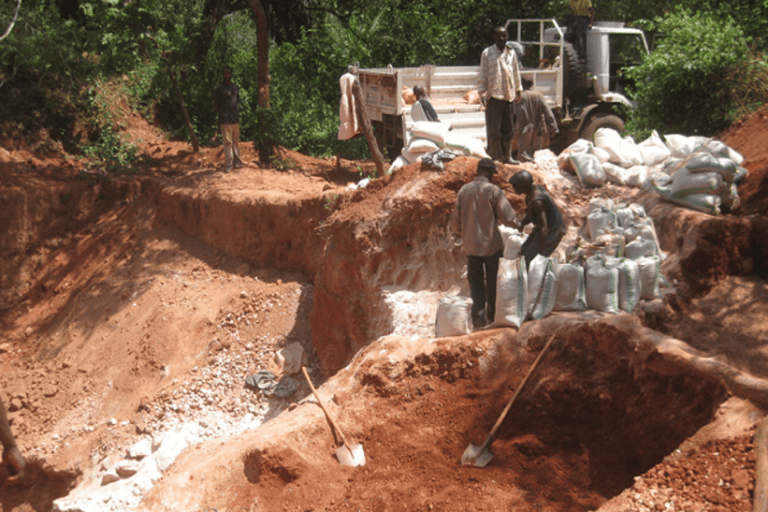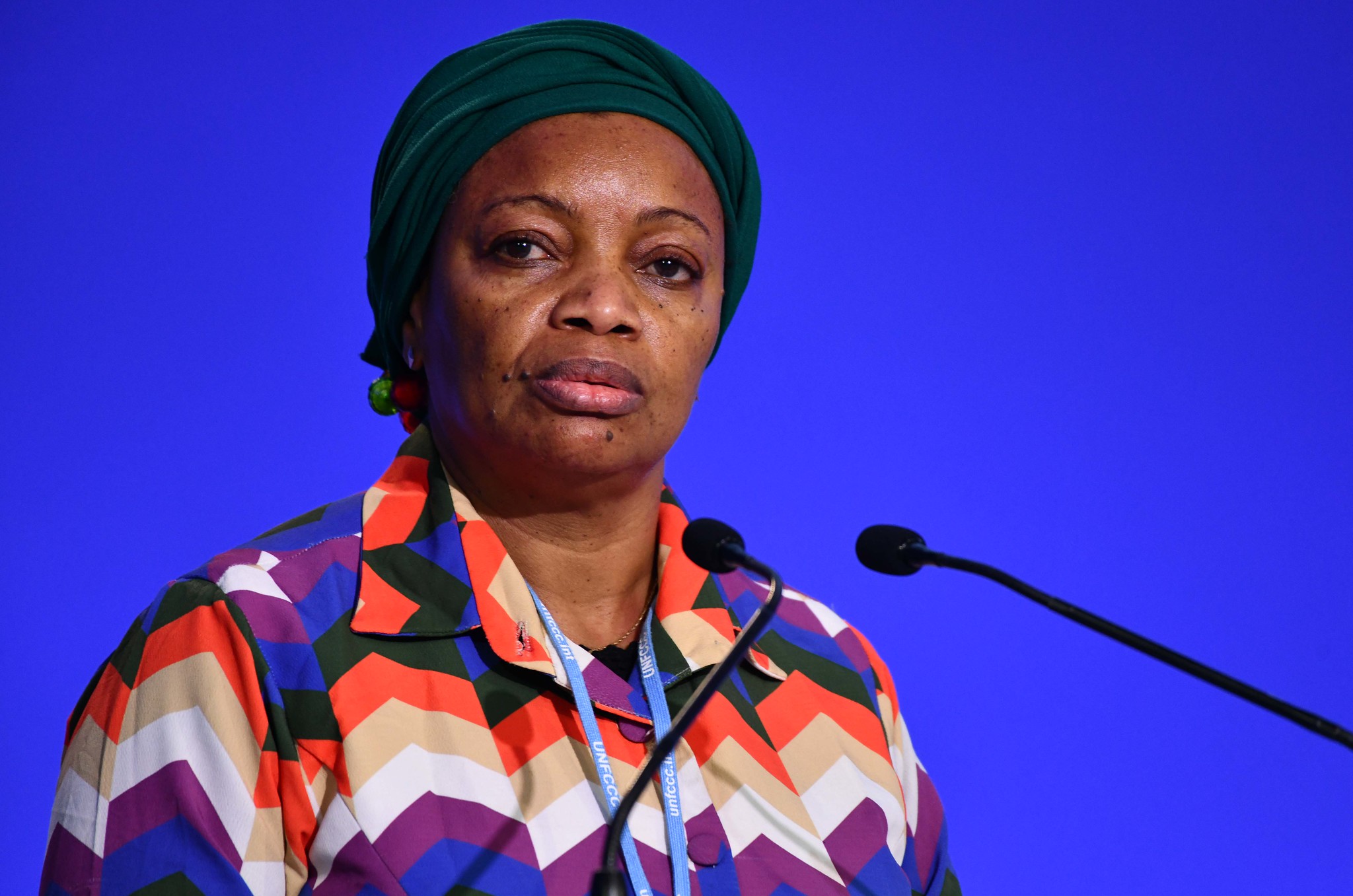- Mining and logging companies in the Democratic Republic of Congo (DRC) are liable to pay a deforestation tax to restore areas impacted by their activities.
- However, after about twenty years since the tax was implemented, reforested areas are few and far between.
- Environmentalists and locals question what the taxes collected from mining companies is being used for, with corruption and financial mismanagement seen as a source of the problem.
- The National Forest Fund (FFN), environmental ministry and political officials did not respond to Mongabay requests for comment.
LUBUMBASHI, Democratic Republic of Congo – Through taxes, in particular the reforestation tax, logging and mining operators in the Democratic Republic of Congo (DRC) must pledge to restore landscapes they have damaged through their activities. To exploit a forest concession, or a mining plot, vast areas of forest and wooded savanna must be felled.
Since 2006, some 200 mining companies have operated in the former Katanga province in southeastern DRC, which is rich in copper, cobalt and manganese. This year marked the start of the so-called mining boom, an explosion in the exploitation of mining deposits following the breaking up of the public copper and cobalt company Gécamines (Quarries and Mines).
The hills, fertile land and woodlands in the open forest in Katanga were the first to be destroyed. The residents who took advantage of this land were sometimes forced to relocate their villages and find new agricultural land.
Read more about it here: Can a reforestation project stop land grabs? Villagers in the DRC give it a try

Due to a lack of reliable data, it is difficult to quantify the effect that industrial mining in the region has had on deforestation. According to data available on the Global Forest Watch platform managed by the World Resources Institute (WRI), the DRC lost 17.1 million hectares (42.3 million acres) of tree cover from 2001 to 2021, equivalent to a 8.6% decrease in tree cover since 2000. In 2021 alone, nearly 500,000 hectares (1.24 million acres) of primary forest was lost. This rate has been consistently high since 2016. The major causes of deforestation in DRC are mining, industrial agriculture and increasing charcoal demand.
“It is important to take steps to restore these areas with reforestation,” said Jean-Pierre Ilunga Ngwej, provincial environmental coordinator of Haut-Katanga. The reforestation tax is meant to address this trend and is recognized by the nation’s forest code and mining code.
“Unfortunately, there is no funding allocated to the Environment Division,” Ilunga Ngwej.
Money spent, questions remain
The Environment Division is the environmental administration at the provincial level of the country. When making important decisions such as implementing a reforestation project, experts in the division are surprised to discover that they are usually left out of the conversation. This is the case with the recent tree planting project in the province of Haut-Katanga. Financed by the National Forest Fund (FNN), $165,000 has been allocated to local NGOs to plant 10 hectares (about 25 acres) in each of the province’s 6 territories (rural administrative entities within the province). The FFN is a public service that allocates funding for the restoration of forest landscapes.
The national president of the GTCRR platform (REDD+ Climate Working Group), Omer Kabasele, who will lead this project, intends to diversify the approach to attract farmers. This will involve planting citrus fruits and fast-growing species such as eucalyptus, for quick cultivation.
Up until May last year, funding allocation from the FFN was low, explained Sabin Mande, an environmental lawyer. But between June and December 2021, the FFN was able to allocate $6 million. However, the tree planting project in Haut-Katanga is the first of its kind since this fund was launched in 2009.
Two nurseries were opened in December 2021, one in Lubumbashi, and another some 130 kilometers (about 81 miles) away in Likasi. The Environment Division also noted the existence of a 100-hectare (247-acre) plot of land for afforestation.

These actions seem minimal to Mande who questions where this money is really going.
Elsewhere, further north of Haut-Katanga in South Kivu province, under former environment minister Claude Nyamugabo, the FFN launched a project to plant 5 hectares (12 acres) of trees in February 2021. Three thousand seedlings had been planted in Kabare, a territory in South-Kivu. Referred to as a “pilot” project, it was meant to have a domino effect in other regions. However, very few of these other projects have since seen the light of day.
According to local sources, these projects have not been very successful and the FFN could have helped by providing better funding. In a May 2021 press release, the FFN denied accusations of financial mismanagement and highlighted funding allocated to a school garden project in Kinshasa, the capital.
This particular project aligns with the presidential pledge to plant one billion trees by 2023. Launched by president Félix Tshisekedi, it is part of the office’s climate commitment to use forests to sequester carbon. The president intends to play a leading role in forestry and climate change adaptation as the country is home to some of the world’s largest forests.
According to former environment minister Nyamugabo, this project would enable the country to achieve the 2011 Bonn challenge. As part of this challenge, the Congolese government had pledged to reforest eight million hectares by 2023. During a meeting of the ministers’ council in October, current environment minister Ève Bazaiba announced that 350 million trees had already been planted within two years. However, local media outlets, such as the Kinshasa-based Environews, dispute the figure and question where the trees had been planted.
If the presidential one billion tree project falters, environmentalists are set blame poor project planning. But for some, like Omer Kabasele of the GTCRR, this will also be due to funding for reforestation being spent elsewhere.

“The taxes paid [by mining entities] should enable the state to carry out reforestation projects. However, companies do not respect the provisions and commitments that are laid out before them in the environmental impact study,” he explained.
The main weakness stems from the lack of enforcement of national laws on environmental preservation and restoration which equates profit to embezzlement, said Kabasele. The is because provinces do not allocate funding collected from private companies to the FFN as required by law, he continued.
A forest administration in stagnation
Kabasele is also surprised that citizens are focused on the FFN rather than the national government and the provinces that do not also allocate taxes owed to this public service. In this context, rigorous controls on FFN management are unlikely.
“We have state services that collect all forest and environmental taxes. The FFN only receives 5% of this,” he explained.
The forest code, particularly article 122, determines the taxes that fall under the national, provincial, and local or urban administrative entities. Each of them should receive a well-defined percentage, based on the allocation criteria clearly defined by law.
When an environmental administration fails to comply with the legislation, it leaves the FFN or the provincial Environmental Divisions with no real room for maneuver. The FFN, for example, has representatives in certain provinces where taxes and receipts given are low, making it difficult to operate. The tendency would then be to draw on the funding available in certain provinces to keep the service running. Funding allocated to actual reforestation often gets the short end of the stick.

When contacted by Mongabay, the FFN, environment ministry and political or administration authorities could not be reached for comment. The responsibility for responding to questions on rates of reforestation and funding was consistently shifted to another department or a higher-level. In the end, nobody could be reached for comment.
“Miners benefit from the absence of a clear reforestation policy,” said Lucien Mbuyu, a local residing near the Ruashi open-pit copper and cobalt mine near Lubumbashi. He is among the residents that also see corruption as a source of the problem.
Some companies can avoid paying reforestation taxes, he said, by capitalizing on their protection from certain public figures.
“[But] when the soil is degraded, it the people who rely on agriculture that pay the price,” he told Mongabay. “Local administrative entities that collect mining taxes don’t actually care about soil and forest degradation.”
Reforestation in private hands
There are a few companies that partake in their own reforestation efforts. For about 5 years, MMG Kinsevere (a subsidiary of MMG Australia Limited) has been maintaining nurseries and plants trees around its mining site each rainy season. Schoolchildren and surrounding residents are involved in these campaigns. In 2017, researchers from the School of Criminology at the University of Lubumbashi named it one of the best private companies respecting human rights in Katanga.
Another company actively taking part in a reforestation project is the Ruashi Mine owned by South Africans and Gécamines. Like MMG Kinsevere, it undertakes reforestation projects east of Lubumbashi where its factory is located. But even in these cases, keeping track of the reforestation rate is difficult.

The city of Lubumbashi also had a nursery until 2014 and continued to fuel reforestation campaigns each year. To date, part of his nursery has been robbed of seedlings. Even for the private companies with a good track record, they have often not followed up on or maintained their ongoing projects.
Although, the city does not have data on how many trees were planted and how many managed to grow, it is proud of an established woodland at the city entrance, on the road to the airport. It is proof that outcomes are possible, if reforestation is properly planned.
Banner image: Gold mine in South Kivu, Congo. Image courtesy of the Sasha Lezhnev Enough Project.
Related listening from Mongabay’s podcast: A conversation with Anuradha Mittal, executive director of the Oakland Institute, and Christian-Geraud Neema Byamungu, a Congolese researcher, about how resource extraction is impacting human rights and the environment in the Democratic Republic of Congo.
FEEDBACK: Use this form to send a message to the author of this post. If you want to post a public comment, you can do that at the bottom of the page.
